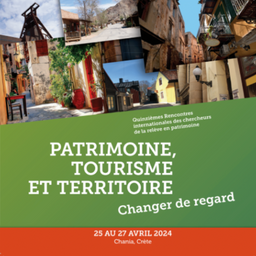Tourism making of heritage
My Session Status
Amalia Kotsaki, Professor of Architecture at the University of Chania, is chairing a session on the challenges of heritage tourism and the social and urban transformations it brings to local areas. Through a variety of case studies, this session explores the relationship between visitors and residents of territories and destinations. Shengxi Zeng will talk about the ways in which the Burmese people have appropriated and resisted the new influx of visitors to this unescientific site. Lise Bernard will talk about the Peruvians' appropriation of the tourist population's consumption patterns and the resulting detour of traditional practices and know-how. Marie-Camille Linte's presentation of the markets of the Hmong people of French Guiana questions the search for a balance between tradition and folklorization in tourist environments.
Sub Sessions
Bagan, inscribed on UNESCO’s World Heritage List in 2019, is a unique cultural treasure trove with over three thousand Buddhist buildings, whose frescoes in more than 300 temples bear pictorial witness to Buddhist art. The emergence of “Bagan sand painting” by local artists, originally intended for the reproduction of mural images in order to preserve cultural heritage, has become a popular travel...
Like the textile tradition of the Peruvian island of Taquile, inscribed in 2008 on UNESCO’s Representative List of the Intangible Cultural Heritage of Humanity, Peruvian weaving is seen by local populations and tourists alike as a central element of the country’s heritage. However, only a “pre-Hispanic” part of textile production has really been heritagized, to the detriment of a whole range of “a-patr...
Initially violently opposed by the Guyanese population and deliberately built in a landlocked area, the village of Cacao has since the 1980s become a must-see tourist attraction in French Guiana.During the week, this village of Hmong farmers is incredibly quiet. All you can hear is the sound of quads ...
